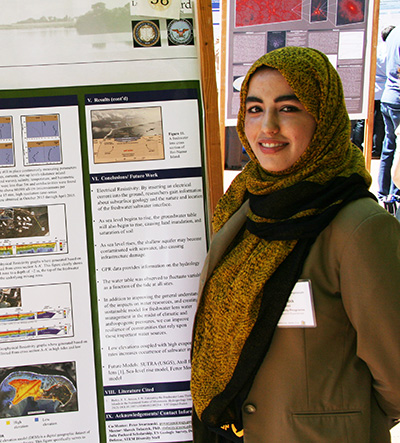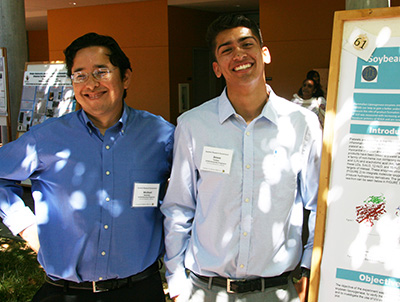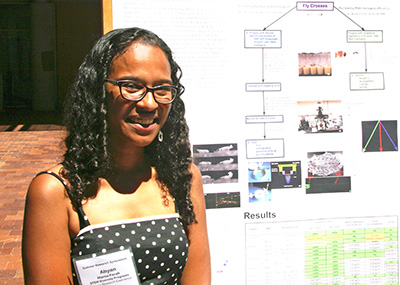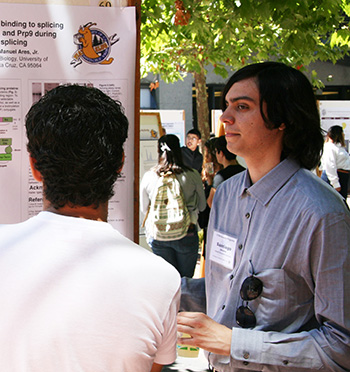More than 80 undergraduate students presented their summer research projects at the 2015 Summer Research Symposium held on Friday, August 14, in the Baskin Engineering Courtyard.
Student researchers explained their work to faculty, staff, and fellow students who gathered around the posters on display in the courtyard. Subjects included ocean acidification, renewable energy systems, stellar explosions, antibiotic resistance, drug discovery, climate change, and much more.
Many of the student researchers are being mentored in campus labs through their participation in programs funded by the National Science Foundation (NSF), National Institutes of Health (NIH), and the University of California. Additional support for undergraduate researchers in the Division of Physical and Biological Sciences is provided through the Dean's Fund for Diversity in the Sciences, created by a gift from Julie Packard and designed to support programs that will help underrepresented minority students excel in science and math. These programs are managed by the division's STEM Diversity Office.
In addition to UC Santa Cruz students, the symposium included student researchers from local community colleges and other institutions throughout the country, all of whom spent the summer doing research at UCSC through various outreach programs. Student researchers at UCSC receive support from a wide range of programs, including the following:
- The ACCESS Summer Research Institute is an intensive eight-week program with an emphasis on biomedical sciences that provides internships for students at local community colleges.
- The California Alliance for Minority Participation (CAMP) supports underrepresented students seeking degrees in science, mathematics, and engineering.
- The Initiative for Maximizing Student Development (IMSD), formerly known as the Minority Biomedical Research Support (MBRS) program, is funded through the NIH.
- The Maximizing Access to Research Careers (MARC) program is an honors program also funded through the NIH.
- The UC Leadership Excellence through Advanced Degrees (UC LEADS) program prepares undergraduates to earn Ph.D.s in science, technology, engineering, and mathematics fields.
- The LAMAT Summer Research Program is an eight-week summer program funded by the NSF Research Experiences for Undergraduates program and designed to introduce students to astrophysical research methods and tools through original research projects in computational astrophysics.
- The Keeley Coastal Scholars Program supports low-income students in the marine sciences.
- The DeAntonio Undergraduate Summer Award for Biomedical Research was made possible by a gift from UCSC alumnus Mark DeAntonio and his wife, Polly Estabrook.






